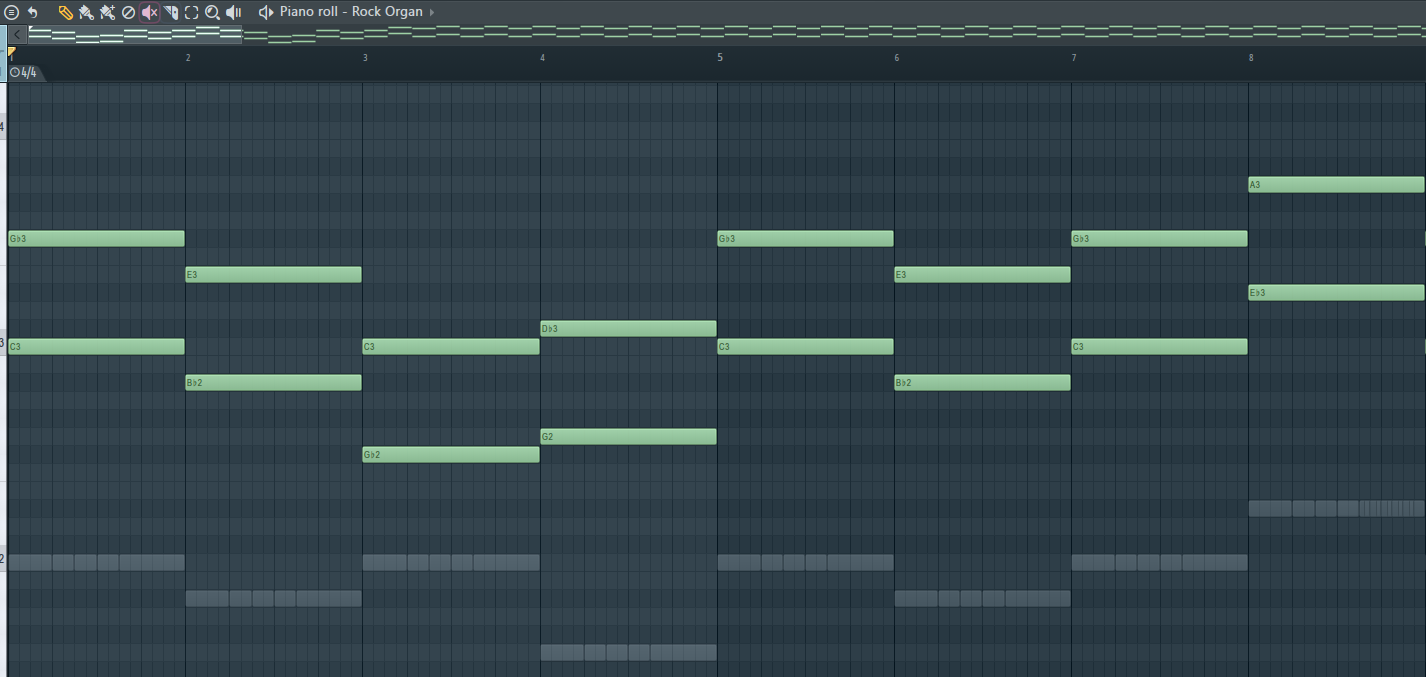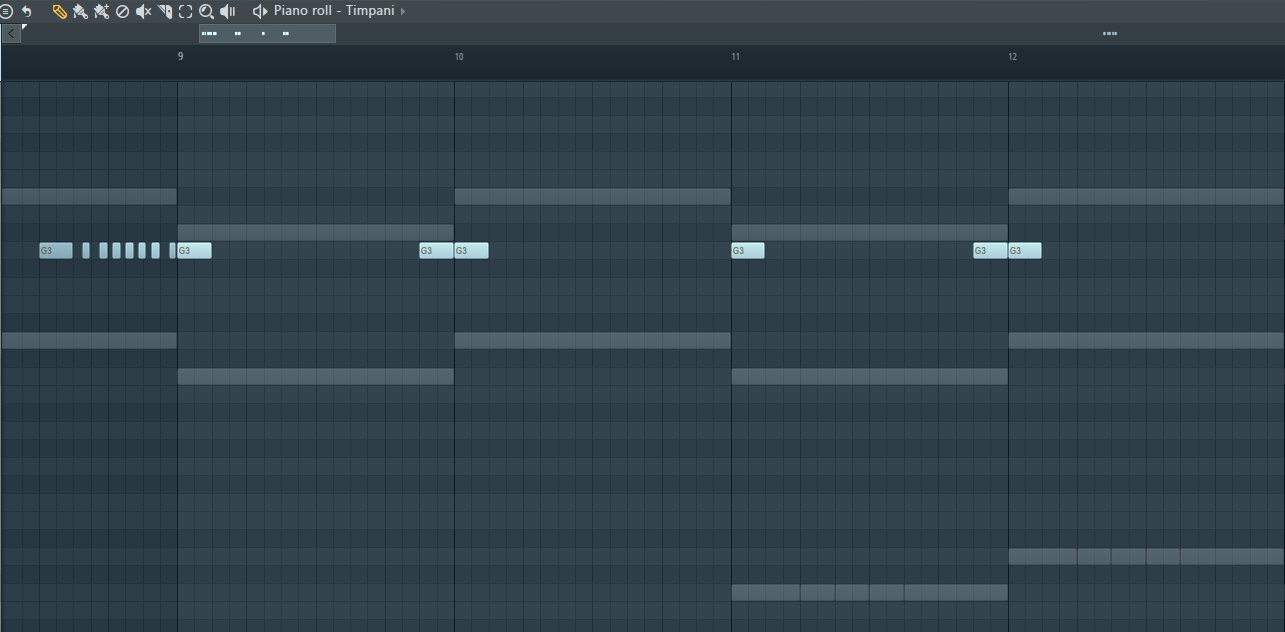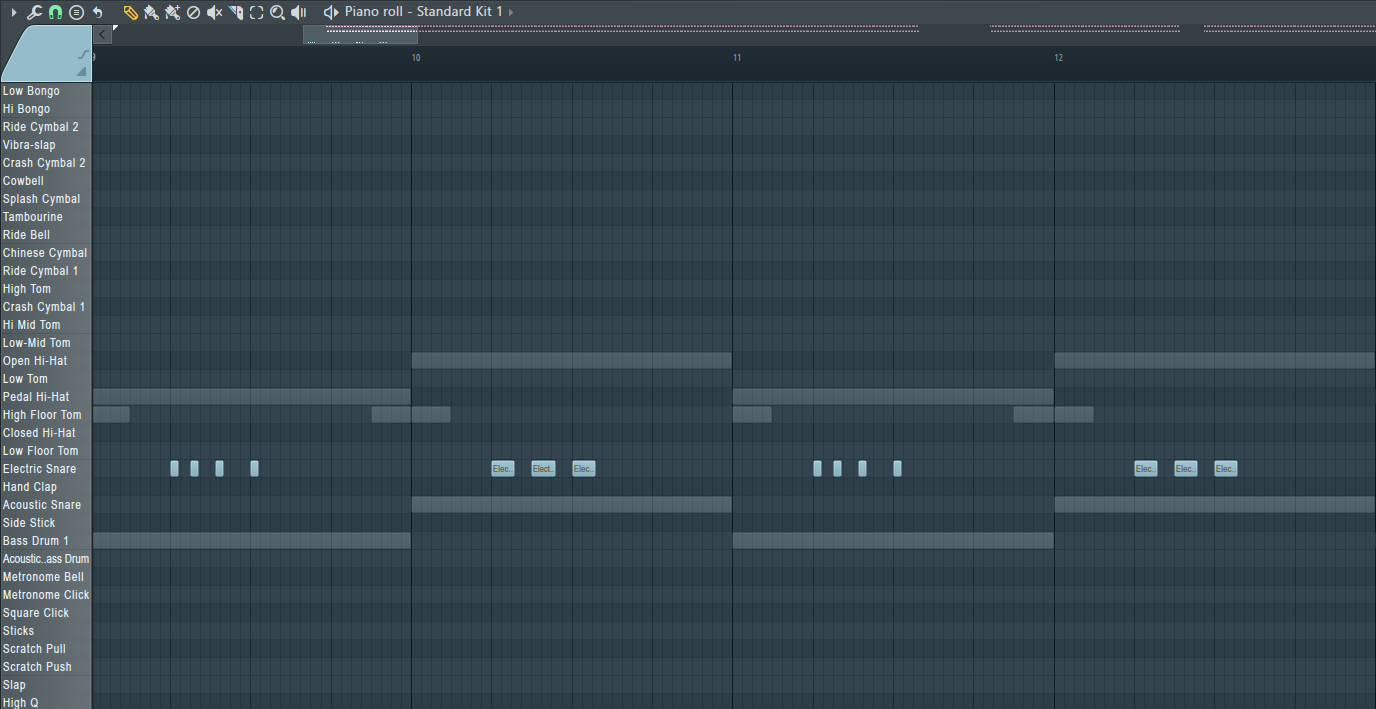-
Posts
176 -
Joined
-
Last visited
About I Drink Lava
-
Rank
Junior Member

Recent Profile Visitors
The recent visitors block is disabled and is not being shown to other users.
-

Anybody ever get chocolate-doom-wii by gered compiled?
I Drink Lava replied to I Drink Lava's topic in Source Ports
Aww, I had a feeling it wouldn't work. Thanks anyway. I had been playing PSX Doom in the newest build of WiiStation with 240p support and it looked alright. I'll have to try RetroArch's PRBoom core out. I still have an old CRT television from the 90s and I wanted to see if the CRT TV crowd was actually right about them being superior for retro gaming. They always say "it softens the edges and removes the pixelated look" but honestly? I could still count the individual pixels if I ran up to a UAC crate. Hell, Doom in 480i looks no different than on my modern IPS monitor, just waaaaay lower resolution. I suspect a lot of the CRT TV claims are bogus, the same way most audiophile claims are. I was even seeing bad ghosting on the lampposts in H2H-Xmas MAP01, which I found out is because CRTs are physically unable to change from black to white fast enough. EDIT: Just got PRBoom in RetroArch Wii running in 240p by setting the resolution to 640x240. Wow! This is more or less exactly what I wanted! -
I found out about this port when I was searching for Doom ports that supported 240p output for CRT televisions. There are like three other ports for the Wii, but they're all 480i output minimum. While those are readily available, there doesn't seem to be a pre-compiled .DOL file for this fork of Chocolate Doom anywhere online. The author said this port required SDL-Wii, but when I tried to compile that, it just gave me an error message. I probably did something wrong. Could someone please get this port compiled and see if it even works? It didn't sound like it was finished even at the time, and there hasn't been an update in 8 years.
-
A pretty okay techbase level, all things considered. It feels like a converted Deathmatch level from 1995 but with the detail of a typical early 2000s WAD. Things go from 0 to Cyberdemon really quickly, but there are really no thrills aside from that. The "Top 100 WADs list" entry mentioned needing more 2000 WADs to fill the list, which kind of explains why some of the choices for that year feel so...off. Oh well, at least it has one of the best Memento Mori II tracks in it. 2.5/5
-
There's not really much about this map I can say that wasn't already mentioned in NuMetalManiak's review. This map from the same author of "Hell Factory" also unfortunately shares a lot of its same flaws, such as the small, orthogonal rooms and tedious switch hunting. There is definitely much more to the gameplay and level layouts, though. Seeing the vast improvements between the two PWADs makes me long for a Hell Factory Hub Two, perhaps sometime after the release of Mordeth E2? 3.5/5
-
Early ZDoom hub with most of the usual problems that came with the then-new format. The gameplay is barebones, the rooms are cramped and orthogonal, the colored sectors are eye-searingly oversaturated, and the stealth monsters don't really add much. Considering just how far ZDoom scripting has come in the 23 years since Hell Factory's release, there's actually a charmingly shitty quality to Hell Factory the same way there is for the most primitive 1994 PWADs. The "weapon" that blows the locked door open is the most ZDoomCute thing I've ever seen. A major strike against this WAD is a game-breaking progression bug towards the end. There is a one-way elevator in the Nukage Area that leads to a locked room with a switch. If you avoid pressing this switch before leaving the room, then the door will not open again and you'll have to noclip to continue. This really should've been caught in playtesting, but most people will probably avoid it.
-
At a time when the Doom mapping well was running dry and source ports had made it possible to steal ideas wholesale from "Quake II" and "Half-Life", the humble and aptly-named Classic Episode was released. While it was made by the same authors of "The Darkening E1", The Classic Episode outclasses both it and its overhyped sequel in terms of gameplay. Sure, the maps are nothing more than the same tired IWAD tropes we've seen countless times before, particularly in E2M3 "The Deimos Complex". However, it is precisely this lack of pretensions why The Classic Episode works so well. It's an episode that plays in the vintage style, but with the massive leaps in quality that came with years of experience in the Doom community. The maps work well, have impeccable balancing, and provide a damn good difficulty curve throughout the 9 levels. E2M9 "Dissension" in particular is the highlight of the episode, which is probably why they made the secret exit in E2M5 so stupidly obvious in the first place. E2M7 "A Place of Sin" is also stellar, seamlessly merging "Pandemonium" with "And Hell Followed". I wouldn't say it's the best or most faithful IWAD-style levelset ever created, as I still feel fondness for 1995's "Fava Beans". In terms of sheer fun factor, however, The Classic Episode delivers in spades.
-
The Darkening episodes are an interesting look back at the turning point in the Doom community. Episode 1 represented a swan song for the classic era, while Episode 2 ushered in a brand new era of meticulously-detailed maps. Darkening E2 is certainly a huge step up from E1 in terms of visuals, and you'd be hard pressed to find a better-looking singleplayer map made prior to its release. However, this high detail comes at the price of the gameplay. It's obvious the team hit the wall with the vanilla engine, and the result are 12 extremely claustrophobic and tedious maps. The first 6 maps are a slog to play through, as the monster counts are low and the only challenge comes from the utter lack of health pickups. The episode picks up considerably in the 2nd half when maps are allowed to have greater opposition than just 3 Revenants, but the core loop never goes beyond the most basic, predictable ambushes and tedious switch hunts. Not helping matters is the soundtrack, which might just be the worst original MIDIs I've heard in any Doom WAD. There's a piano solo in the MAP09 track that's so horrible, I thought my MIDI player actually broke! The Darkening E2's importance in Doom modding history can't be overlooked, but there were far better levels in earlier WADs like "Icarus" and "Dystopia 3". In other words, Darkening E2 is exactly as good as you'd expect a product derivative of Quake II to be.
-
I Drink Lava changed their profile photo
-

The General MIDI Museum - A Youtube Archive
I Drink Lava replied to I Drink Lava's topic in Creative Works
https://www.reddit.com/r/gaming/comments/10ih4yd/20_years_after_a_ps2_game_is_released_the_artist/ -
Definitely look into music theory if you haven't already. You can put in "music theory cheatsheet" and find some pretty useful information right out the gate. Learning the keys is a very overlooked thing. If you can hum a few notes, put them into your editor, and say "this is in the key of E flat minor", then it'll make the transcribing process a whole lot easier. Learning common chord progressions is also very helpful. I'd start with Bobby Prince's tried and true 12-bar blues progression first to get immediate Doom-sounding results. A MIDI is just any file that contains data including note pitch, length, and velocity. Pretty much any music software will create a MIDI or something that can be converted into one. Specific information such as preset numbers and bank numbers fall into the General MIDI standard. You'll need this GM information in order to create something that can be played back in Doom, otherwise it'll all default to piano sounds (even the drums).
-
There was an underground South Korean DOS scene in the early-to-mid-90s complete with its own MIDI community. The old Chaos soundfont came from this niche subculture, with a MIDI cover of the Nadia: The Secret of Blue Water opening as its demo file. No doubt this must've spilled over into the BBSes of the time, probably from bilingual users. I actually found this thread linked from another "old PWADs with custom music" thread several years ago and this MIDI ended up stuck in the back of my mind. It's a strangely memorable MIDI, moreso than the actual level it's from which sucks pretty bad. Now I just have to solve the mystery of where SLUGFEST.wad MAP02 is from.
-
Hoo boy, taking a big risk bumping a 12-year old thread like this but I found out the real source thanks to Youtube's over-aggressive Copyright ID system:
-

"Dreadful Heat" - a dark and ominous track
I Drink Lava replied to DamTheGreat's topic in Creative Works
I really hope you didn't pay a music instructor for this. -For starters, the entire structure is just I-II repeated during the entire duration of the song with no variation whatsoever. -Not only that, but the chords are 8 semitone intervals which just sounds wrong. Have you not heard of the Tritone, diabolus in musica? You want to space the notes 6 semitones apart for that classic dissonance. -The chord progression ascends, which doesn't sound right at all for the tone this piece is going for. Ascending notes gives listeners a sense of hopefulness. It reminds me of this song, which I should point out is often criticized for its repetitive sound as well as replacing more interesting songs after missions are beaten. You want the notes to descend to give them a sense of hopelessness. I've created an 8-bar proof of concept of what your chords should roughly look like. It goes I-VII-I-V on the first measure, then I-VII-I-III on the second. The I on the third bar is inverted to lend to the descending sound. -The bassline drops out on the 7th bar. Why? It happens again later in the song, too. -A timpani kicks in on the first beat of the 8th bar, but it should really start on the third beat to build up anticipation for the next measure. The rapid timpanis seem out-of-time, too. Also, you should keep the timpanis as a rhythm section, roughly like below. I think the timpanis are supposed to be in tune with the rest of the music, but you just have them play on G3. -Instead of those weird, sprinkler-like shakers constantly playing, have some orchestral snares roughly like this. I would change the bassline to better suit this marching-style percussion too. -At the 15th bar is where the song completely falls apart. Setting aside that you should really wait until the next measure to start the melody (17th bar), the melody is a complete jumbled mess of random notes that don't harmonize or resolve well at all. It honestly sounds like AI algorithm generated music. I would just throw out the entire melody in favor of something more minimalist and ambient, sort of like this Duke Nukem 3D track. When it comes to music, less is more. Just have your bass, chords, and percussion play on loop, then record yourself humming simple melodies over it. Transcribe those melodies into your editor playing each key one at a time. -Most perplexing is the fact that the notes are all in Major key, when they really should be Minor key. Have you never seen the meme videos where traditional Minor key music is transposed into Major key? -

The General MIDI Museum - A Youtube Archive
I Drink Lava replied to I Drink Lava's topic in Creative Works
The rare Aureal Vortex 2 demo MIDIs are up! The soundfont sounds accurate for the most part, although the synth sounds are a bit thin compared to the real thing. You can download the soundfont here. I can't say it's the most exciting music in the world, but it's still well worth archiving. -

The General MIDI Museum - A Youtube Archive
I Drink Lava replied to I Drink Lava's topic in Creative Works
Not sure if bumping is allowed, but I recently discovered the existence of 5 demo MIDIs that came with the Aureal Vortex2 that don't seem to have any information about them online. The Aureal Vortex2 actually has its own unique sample set that doesn't sound half bad. I found this post that mentions being able to convert the .ARL file into .SF2 format, but as usual the poster does not mention how to convert the file or even share the converted file for everyone else. I did find this post on VOGONS that has a converted file from the Turtle Beach Montego II, but some of the presets like the Orchestra Hit are noticeably lower quality than in that Youtube video. If anybody following this thread knows how to convert .ARL format to .SF2, please contact me so I can get these Aureal demo MIDIs archived with the intended sound by the composers. BTW if anybody here has been wondering what happened to this project, it's still continuing over on Youtube. This Passport Designs Inc. MIDI called dreamy.mid has become somewhat popular: -
You can't just write a song using one scale, there's more to it than that. Music is made up of different chord progressions and rhythms. Even one of those "learn music theory in 30 MINUTES!!!" videos would be more useful than just learning a single scale. Listening to "Interrupted Vacation", I can clearly hear a disparity between the bass notes and the melody. The bass is just playing the root note of C (1) for the entire duration of the song with very little movement (only 2nd and 3rd intervals) and in a strangely out-of-sync way at that. The sixth note in the measure does not even line up with the beat, somehow. Even if your song does not have literal chords, the notes of the bassline and melody will still correspond to a chord in the scale. Now I am not well-versed in music to transcribe your chord progressions, but I can tell you that a root note of C in C Major would be for a I chord containing C, E, and G (1, 3, and 5). Also, why does the bassline go up an octave randomly on the 19th measure? Was that a user error in the editor? The percussion does not line up with the bass or the melody, either. When the other percussion instruments kick in, they just play on the same beat. It becomes a cacophony of noise. Typically, you want to have the percussion layered so it doesn't all robotically play on the same beat. The most simple way of doing it would be having quarter notes (usually kick-snare), layered with eighth notes (cymbals, the various conga drums and other misc. percussion) and sixteenth notes (hi-hats and shakers). I suggest you go back to the drawing board and take in more music theory lessons. Instead of randomly playing the 8 notes in C Major with no emotional resonance and the same few motifs repeated, you should start with with an actual structure. The most beginner lesson would be to use a I-IV-V progression, which in C Major would correspond to C-E-G, F-A-C, G-B-D. You could probably find a I-IV-V loop somewhere free online, then practice improvising over it by humming a melody, then transcribing that melody into notes in your editor. After that, I would listen to some music like you're trying to compose in the style of (in this case, Calypso music) and find a transcription that contains the key it's written in and the names of the chords so you can find the progression.





